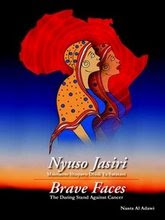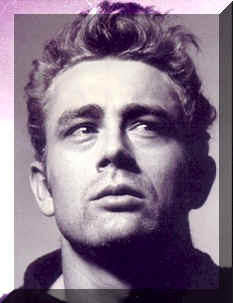
Sunday, November 25, 2007
Wednesday, November 21, 2007
Monday, November 12, 2007
Progress ?
graeme said...
Indian Chief "Two Eagles" was asked by a white American government official,> "You have observed the white man for 90 years. You've seen his wars > and his technological advances. You've seen his progress, and the > damage he's done." > > The Chief nodded in agreement. >
The official continued, "Considering all these events, in your opinion, > where did the white man go wrong?" > >
The Chief stared at the government official for over a minute and then > calmly replied. "When white man find land, Indians running it, > no taxes, no debt, plenty buffalo, plenty beaver, clean water. > Women did all the work, Medicine man free. Indian man spend all day > hunting and fishing; all night having sex." > > Then the chief leaned back and smiled. "Only white man dumb enough > to think he improve system like that.">
Indian Chief "Two Eagles" was asked by a white American government official,> "You have observed the white man for 90 years. You've seen his wars > and his technological advances. You've seen his progress, and the > damage he's done." > > The Chief nodded in agreement. >
The official continued, "Considering all these events, in your opinion, > where did the white man go wrong?" > >
The Chief stared at the government official for over a minute and then > calmly replied. "When white man find land, Indians running it, > no taxes, no debt, plenty buffalo, plenty beaver, clean water. > Women did all the work, Medicine man free. Indian man spend all day > hunting and fishing; all night having sex." > > Then the chief leaned back and smiled. "Only white man dumb enough > to think he improve system like that.">
Sunday, November 11, 2007
SEX and SPIRITUALITY
By Parveen Chopra
Long seen as the enemy of the spirit, sex is now being used as its ally
A few years ago I attended a grueling 10-day vipassana camp. A few days into the course and I started having unusually erotic dreams at night. It was disconcerting, to say the least.
What could be the provocation when I was sitting in meditation practically all day? On the tenth day of the course, when we broke the silence, I overheard a group of boys talking animatedly about erotic dreams. I sought out an explanation from the course supervisor. He said it was not unusual in vipassana camps. Since deep and extensive cleansing takes place during the course some deep-rooted vasanas and sanskaras, long buried in the unconscious and subconscious, come to the surface and get released.
Repressed sexual desires are naturally deeply embedded in the psyche and cleansing process triggered by intense meditation manifests as erotic dreams. This was a very intimate first-hand experience of the somewhat fuzzy relationship between sex and spirituality. We may be unclear about the exact nature of the relationship between the so-called most base and the highest drive in human beings. But there is no doubt about the link, going by the strident pronouncements of the two hostile camps down history. Tantrics and latter day libertarian seekers insist that without sexual yoga you cannot attain enlightenment. On the other hand, the sadhus and swamis and monks and priests have always argued that without celibacy you may as well forget about spiritual growth.Freud onwards, psychology has also conceded that the sexual drive or energy can be sublimated into higher avenues such as art and spirituality. "The elements of the sexual instinct are characterized by a capacity for sublimation, for changing their sexual aim into another of a different kind and socially more worthy. To the sum of energies thus gained for our psychological productions we probably owe the highest results of our culture," he wrote.Taking a different tack, psychologist Erich Fromm wrote in The Art of Loving that the basis for our need to love lies in the experience of separateness and the resulting need to overcome the anxiety of separateness by the experience of union. In its deepest meaning, then, love/sex becomes spiritual. The stories of legendary Indian lovers are a case in point. Majnu's love and intensity of desire to be united with Laila is so exalted that it becomes spiritual. Laila substitutes for God as an object of worship.
Now, one new factor in sex-spirituality equation is that the shame and guilt associated with sex is all but gone. There is more permissiveness. We are bombarded with sexual content from print and advertisement media, TV channels, the Net. All this makes people wonder that there must be more to it than we are getting. In the western world, this has sent many unfulfilled people on a wild goose chase for super sex. Still others are queuing up for workshops on Tantra for both sexual fulfillment and spiritual growth. In fact, Dorothy Scaly, an American now based in Delhi, reports that in the USA, the most sought after New Age workshops these days are on Tantra. Whether they are the genuine item or just provide titillation is another story.The common Indian, however, may still be suffering from the classic Portnoy's Complaint: not getting enough sex—except in marriage. Most of us do grow out of guilt and shame associated with sex, but the question pops up again when we start treading the spiritual path. Is it okay? How much is okay? So, we come back to square one.But first let's understand and accept that sex is a very powerful drive. Speaking from his 12 years of teaching, American guru Andrew Cohen states that for most spiritual seeker today, "sex is more important than God". He might as well have included some well-known spiritual gurus: every year a new scandal breaks out in an ashram somewhere, where the supposedly celibate guru gets charged with sexual misconduct and sexual harassment of female disciples. Now married, to an Indian, Cohen talks candidly about the earlier period when he would get disturbed by the sexual urge: "I knew little in relationship to this at times overpowering force that could rise out of nowhere and completely capture my attention." He insists that it is always a mistake to underestimate the overwhelming power to create delusion that the sexual instinct possesses.As his spiritual yearning grew, Cohen began to find the romantic/sexual experience to be "an annoying distraction," and the less interested he became in " bearing the emotional intensity and personal focus" that the romantic/sexual drama almost always involves. From experience, he found that the enticing promise that the sexual/romantic impulse always offered was rarely fulfilled. And even when it was, even that proved to be a distraction from the longing for spiritual union. It is perhaps to conserve energy spent on the sexual/romantic drama that gurus such a Maharishi Mahesh Yogi recommend that their followers either get married or remain celibate. On the other hand, Aurobindoites say that the Mother discouraged marriage, not because she was anti-sex, but because she believed that a true marriage of the minds needs no social bond and in marriage the sacred bond is invariably violated.Let us now hear the arguments forwarded in support of celibacy.Swami Chidananda, 84, the revered president of the Divine Life Society, gives the traditional argument cogently. He says: " Brahmacharya, or celibacy, is a rational process of preserving and conserving precious energy so that it can be utilized in other very essential and indispensable functions. And if it is preserved like this, it can be converted, just as tangible, gross water is converted into subtle steam. Then it can do wonders."
But what is the origin, the source, of this energy? Swami Chidananda refers to the familiar findings of modern physicists that what exists in nature is not palpable or solid matter as such. It is energy. "Our ancients have said that it is this same cosmic energy that is present in living beings as the sex force. So Hindus regarded this energy as sacred, something that is worthy of being worshipped, not frittered away."Swami Chidananda is all for transmuting the sexual into the spiritual since the same vital energy, prana, is at work in both. "Any sense activity or sense experience consumes a lot of prana. The highest of all goals in human life, spiritual attainment, requires the maximum available pranic energy on all levels: mental, intellectual and emotional. Celibacy or brahmacharya ensures that an abundance of pranic energy is available to the seeker.Modern-day sexologists laugh at the traditional Indian idea of conserving bindu (semen, sexual energy), saying that it is an affluent that will find its way out. But just like modern medicine keeps revising its theories, this may not be the final word on the subject either. And even a dimwitted person will tell you that sex works on many planes.Incidentally, more than Hinduism, the Buddha put much emphasis on celibacy for monks. Bhante Henepola Gunaratana, 70, a renowned Buddhist scholar based in the USA, explains the reason thus in Andrew Cohen's What is Enlightenment? magazine: "Because those who want to attain liberation from dukka, suffering, have to observe certain principles. Because if they are engaged in all kinds of sexual activities, they will be engrossed in various types of problems related to sex. Also, those who are interested in the monastic life want to live a very simple life-because in the final analysis, it is only when we get rid of our greed, lust and craving that we can liberate ourselves from suffering. You see, if our intention is to get rid of suffering, then we have to get rid of cause of suffering, and lust is definitely the cause of suffering."Unlike Chidananda, Gunaratana's argument is not that celibacy conserves energy. He happens to concur with Cohen: "Because as long as you are in sexual activity, your mind will be cluttered, clouded and confused and you will get involved in jealousy, fear, hatred, tension and so forth-all the worries that arise from lust." Yet, he says that the Buddha suggested that control and discipline of our senses should be done gradually, only through understanding, and not abruptly.One religion that has almost converted the entire world to its conservative approach towards sex is Christianity. It all began with the idea of "original sin". Margot Anand, tantric author and teacher, traces its roots to St Augustine, who was a very devout man, and who at a very early age wanted to become a priest. But he was also a very sexual being who had a lot of sexual energy. Throughout his adult life, he struggled without success to control his libido. Finally, he concluded that there was an element in us that predates the control that we can have through our mental and spiritual powers, and he called this "original sin". India wasn't a sexually repressed society always. We became one under the influence of Buddhism and Jainism and later Islam and Christianity. Says Dr Shanshank Samak, an Indian sexologist: "Indians were the most sexually active people in the world. The Kamasutra was astonishingly liberal and men and women were equal participants in the sexual act. Sex was very creative, not only from the procreation point of view but recreation as well. It was not something to be done away with but an event to be celebrated, a road which led to ecstasy and finally nirvana for both the participants." Maithunam paramam tatvam, shrushti stithi anya karanam….( Coitus is the ultimate principle behind creation, preservation and destruction of the Universe), said Lord Shiva in the Kailas Tantra. Dr. Prakash Kothari, eminent Mumbai sexologist, however says that Indian shastras held both abstinence and Tantra as valid ways for achieving nirvana. Tantra recommends indulgence to such an extent that you have no further desires left. Now, this path is fraught with danger. It is for the brave and the resolute because you have a high probability of sinking deeper into the quagmire instead of rising above it. I've known a few Oshoites who tried this route at the Osho Commune in the '70s and the '80s when the place was more permissive. They had fun but were none the wiser for it. "Hindu philosophy is holistic, all-embracing as it speaks of four purusharthas: dharma, artha, kama and moksha. Kama means desire, primarily sexual desire," says Kothari. "Thus the path to moksha or liberation is through the experience of kama. In the tenth chapter of the Bhagavad Gita, Krishna says: "I'm omnipresent but in the human body. I take the form of desire, particularly sexual desire."Chaturvedi Badrinath, an Indian journalist who specializes in spiritual/religious writing, adds: "The major Upanishads consider the human body, of man and woman, with all its innate attributes, physical and psychological, as sacred. This is a matter not of attitude but of acknowledgment that the clearer the awareness of the sacredness of the physical, the more heightened will be the sexual pleasure. There is absolutely no doubt that vairagya (asceticism) was a product of fear-the fear of life in which fear of sex became the most dominant fear. It became a denial of the body and its natural pleasures, of personal ties and their comfort, of social relations and their security. Before the Buddha there had been in the Upanishads a turning away from senseless asceticism. And yet, the ascetic, by whatever name called, remained at all times of Indian history a visible presence."What's special about Hinduism is that both extreme asceticism and Tantra flourished here. Tantra was later co-opted by some branches of Buddhism, particularly in Tibet. While Tantra has mystical, philosophical, and religious aspects, it is, above all, a technique of action-a physical, mental and spiritual discipline that incorporates meditation, yoga, and sacramental worship in the very widest sense of that phrase. All the actions, which sometimes are socially unacceptable, undertaken by a practitioner of Tantra are means to the same end: the transformation of the individual, his or her rebirth to a new existence on every level of consciousness.
Badrinath explains: "The force of sex can be transmuted into the highest form of spiritual energy. That can be done neither by confining sexuality within an arbitrary social order, nor by renouncing it, but by utmost submission to it. The cosmic energy stored in human sexuality can be released into human consciousness. But not before sex has been perceived, and worshipped, as the primal force, Shakti." According to Dr Rajan Bhonsle, Indian sex and marriage counselor and therapist, sex transcendence should happen in the natural course of events. "Trantric philosophy holds that sexually man is required to move through four stages. These are auto sexuality (age 0-7), homosexuality (age 7-14), heterosexuality (age 14-42) and asexuality from then onwards. Unlike physical aging, the sexual stages depend upon us, but this is the pattern that nature wanted to follow. At 42, man's obsession for sex will leave him. He may still have sex but he will be detached. He will have attained a natural celibacy. At this stage his spiritual attainment too, will reach its climax, because he is evolved in every way."The basic belief of Buddhist Tantra, according to Miranda Shaw, American Tantric scholar, is that in order to attain full enlightenment you have to release the energy of your heart. She writes: "Some of the Tantric pioneers felt that a celibate lifestyle did not, in fact represent a mastery of one's sexuality, but rather a repression of and even a flight in fear from one's sexuality… There is a Tantric teaching to the effect that without the practice of sexual union and without integrating one's energies at that level, it is impossible to attain enlightenment in the present lifetime."A Tantric text, quoted in Shaw's book, goes so far as to state that even the Buddha did not, in fact, attain enlightenment under the bodhi tree, as is commonly believed, but while practicing sexual yoga in the palace with his wife. Then he renounced his kingdom, became a homeless wanderer and did years of austere practices in order to draw people, who would be inspired by renunciation and who are in fact destined to follow a path of renunciation, to the spiritual path. Margot Anand, who teaches Sky Dancing Tantra, a system combining elements of Tantra and modern psychology, explains that the spiritual orgasm given by Tantra leads to enlightenment: "Tantra is an activation of all our energies. And by channeling the sexual energies through the various charkas, you can reach levels of ecstasy, states of merging an session through your partner with the divine that are so powerful that I would certainly say that Tantra is a shortcut."Margot, with her best selling books, The Art of Sexual Ecstasy and The Art of Sexual Magic, was a pioneer in bringing Tantric practices to the West. Since she began teaching in the 1970s, hundreds of books, workshops and videos on Tantra have sprung up in the USA. Margot has led workshops at the Osho Commune in Pune also. In The Art of Sexual Ecstasy, she describes the pinnacle of Tantric practice as the "orgasm of the brain". This experience, she writes, "creates a bridge between the left and right hemispheres, fusing the intellect of the left hemisphere with the intuitive faculties of the right. It is this fusion that creates the experience of ecstasy, in which body, mind, heart and spirit all participate." And in The Art of Sexual Magic, she writes: "In deep sexual embrace, the mind stops. Quite literally, you "fuck your brains out." Your consciousness becomes clear, innocent, fresh." As a guide to attaining these ecstatic states, Anand provides an extensive (and explicit) manual of exotic sexual practices. Margot has coined the term High Sex, which she defines thus: "High Sex takes the experience of orgasm to a new dimension-a dimension in which genital orgasm is only the beginning. It inspires you to explore the full capacity of orgasm. Culminating in ecstatic body-to-body and soul-to-soul communion. It is an experience to the whole body, the whole being."All credit goes to Margot's master, Osho, for bringing the sex-vs.-spirituality controversy center stage in our time with his runaway book From Sex to Superconsciousness. He propounded the view that orgasm is a mini and temporary samadhi. It can transport you to a state of rapture. The mind becomes devoid of thought, the egocentric view of life disappears and we step outside of time into the timeless a 'now' of bliss. Very much like samadhi or pure consciousness. This line of thinking was so revolutionary for his time tat he attracted a lot of flak and notoriety.The fundamental view pervading the contemporary spiritual scene seems to be that sex, long seen as the enemy of the spirit, is actually its ally, or can be made to act like one. This sex-positive spiritual view holds that to truly become whole, we must liberate our sexuality from the chains of guilt, shame and repression, and allow it to find full expression as a natural, healthy and even sacred part of life.This belief has become so widespread that today the spiritual practice of celibacy—considered for millennia to be a profound, powerful and even crucial aspect of spiritual life by Christians, Buddhists and Hindus alike—seems to have all but fallen by the wayside. The modern consensus seems to be that in a psychologically enlightened culture such as ours, celibacy no longer has much relevance. But the need of the hour is sacralizing sex. It is becoming too mater of fact, almost like an itch that needs to be scratched. The mystery is gone.The views of many Indians are heartening though. Says Vikas Malkani, an Indian spiritual guide and author: "Making love can become a giving, expressing, selfless act, which is a form of prayer in itself. Through the body, the hearts are touched; the emotions opened, needs and desire expressed, fears released, security given and souls merged. Through the act of physical sharing, God is revered and remembered. Making love goes from the physical to the emotional and finally to spiritual level where it becomes a prayer to the Divine."Santosh Sachdeva, a Mumbai businesswoman who has been blessed with some advanced spiritual experiences which she has just published in book form, almost seems to endorse Malkani's statements: "In my meditation, I saw consciousness dividing itself into the male and female principle. The left side was the female and the right side was the male. The coming together of the male and female is the source of all creation. Everything comes through that. We have so many inhibitions about sex, perhaps understandably so, but ultimately, it is nothing but creation manifesting itself."The final word goes to Osho: not from sex to superconsciousness, sex is superconsciousness. There is no higher, no lower.
more
Osho, a modern writer on the subject of spirituality has comments to save with respect sex and spirituality. Osho’s book contains many arguments in favour of sex as an integral aspect of spirituality. Among Osho’s claims is that it was "through the sexual orgasm that religion was created" (244).
Far from placing spirituality above sex, Osho admonishes that those who try to deny sexual relationships in the name of pursuing one’s spirituality are in fact committing a type of suicide are merely denying an essential aspect to being a human being. Osho, in fact, not only endorses the sexual act, but also encourages one to find and relate to as many members of the opposite sex as possible
more
Long seen as the enemy of the spirit, sex is now being used as its ally
A few years ago I attended a grueling 10-day vipassana camp. A few days into the course and I started having unusually erotic dreams at night. It was disconcerting, to say the least.
What could be the provocation when I was sitting in meditation practically all day? On the tenth day of the course, when we broke the silence, I overheard a group of boys talking animatedly about erotic dreams. I sought out an explanation from the course supervisor. He said it was not unusual in vipassana camps. Since deep and extensive cleansing takes place during the course some deep-rooted vasanas and sanskaras, long buried in the unconscious and subconscious, come to the surface and get released.
Repressed sexual desires are naturally deeply embedded in the psyche and cleansing process triggered by intense meditation manifests as erotic dreams. This was a very intimate first-hand experience of the somewhat fuzzy relationship between sex and spirituality. We may be unclear about the exact nature of the relationship between the so-called most base and the highest drive in human beings. But there is no doubt about the link, going by the strident pronouncements of the two hostile camps down history. Tantrics and latter day libertarian seekers insist that without sexual yoga you cannot attain enlightenment. On the other hand, the sadhus and swamis and monks and priests have always argued that without celibacy you may as well forget about spiritual growth.Freud onwards, psychology has also conceded that the sexual drive or energy can be sublimated into higher avenues such as art and spirituality. "The elements of the sexual instinct are characterized by a capacity for sublimation, for changing their sexual aim into another of a different kind and socially more worthy. To the sum of energies thus gained for our psychological productions we probably owe the highest results of our culture," he wrote.Taking a different tack, psychologist Erich Fromm wrote in The Art of Loving that the basis for our need to love lies in the experience of separateness and the resulting need to overcome the anxiety of separateness by the experience of union. In its deepest meaning, then, love/sex becomes spiritual. The stories of legendary Indian lovers are a case in point. Majnu's love and intensity of desire to be united with Laila is so exalted that it becomes spiritual. Laila substitutes for God as an object of worship.
Now, one new factor in sex-spirituality equation is that the shame and guilt associated with sex is all but gone. There is more permissiveness. We are bombarded with sexual content from print and advertisement media, TV channels, the Net. All this makes people wonder that there must be more to it than we are getting. In the western world, this has sent many unfulfilled people on a wild goose chase for super sex. Still others are queuing up for workshops on Tantra for both sexual fulfillment and spiritual growth. In fact, Dorothy Scaly, an American now based in Delhi, reports that in the USA, the most sought after New Age workshops these days are on Tantra. Whether they are the genuine item or just provide titillation is another story.The common Indian, however, may still be suffering from the classic Portnoy's Complaint: not getting enough sex—except in marriage. Most of us do grow out of guilt and shame associated with sex, but the question pops up again when we start treading the spiritual path. Is it okay? How much is okay? So, we come back to square one.But first let's understand and accept that sex is a very powerful drive. Speaking from his 12 years of teaching, American guru Andrew Cohen states that for most spiritual seeker today, "sex is more important than God". He might as well have included some well-known spiritual gurus: every year a new scandal breaks out in an ashram somewhere, where the supposedly celibate guru gets charged with sexual misconduct and sexual harassment of female disciples. Now married, to an Indian, Cohen talks candidly about the earlier period when he would get disturbed by the sexual urge: "I knew little in relationship to this at times overpowering force that could rise out of nowhere and completely capture my attention." He insists that it is always a mistake to underestimate the overwhelming power to create delusion that the sexual instinct possesses.As his spiritual yearning grew, Cohen began to find the romantic/sexual experience to be "an annoying distraction," and the less interested he became in " bearing the emotional intensity and personal focus" that the romantic/sexual drama almost always involves. From experience, he found that the enticing promise that the sexual/romantic impulse always offered was rarely fulfilled. And even when it was, even that proved to be a distraction from the longing for spiritual union. It is perhaps to conserve energy spent on the sexual/romantic drama that gurus such a Maharishi Mahesh Yogi recommend that their followers either get married or remain celibate. On the other hand, Aurobindoites say that the Mother discouraged marriage, not because she was anti-sex, but because she believed that a true marriage of the minds needs no social bond and in marriage the sacred bond is invariably violated.Let us now hear the arguments forwarded in support of celibacy.Swami Chidananda, 84, the revered president of the Divine Life Society, gives the traditional argument cogently. He says: " Brahmacharya, or celibacy, is a rational process of preserving and conserving precious energy so that it can be utilized in other very essential and indispensable functions. And if it is preserved like this, it can be converted, just as tangible, gross water is converted into subtle steam. Then it can do wonders."
But what is the origin, the source, of this energy? Swami Chidananda refers to the familiar findings of modern physicists that what exists in nature is not palpable or solid matter as such. It is energy. "Our ancients have said that it is this same cosmic energy that is present in living beings as the sex force. So Hindus regarded this energy as sacred, something that is worthy of being worshipped, not frittered away."Swami Chidananda is all for transmuting the sexual into the spiritual since the same vital energy, prana, is at work in both. "Any sense activity or sense experience consumes a lot of prana. The highest of all goals in human life, spiritual attainment, requires the maximum available pranic energy on all levels: mental, intellectual and emotional. Celibacy or brahmacharya ensures that an abundance of pranic energy is available to the seeker.Modern-day sexologists laugh at the traditional Indian idea of conserving bindu (semen, sexual energy), saying that it is an affluent that will find its way out. But just like modern medicine keeps revising its theories, this may not be the final word on the subject either. And even a dimwitted person will tell you that sex works on many planes.Incidentally, more than Hinduism, the Buddha put much emphasis on celibacy for monks. Bhante Henepola Gunaratana, 70, a renowned Buddhist scholar based in the USA, explains the reason thus in Andrew Cohen's What is Enlightenment? magazine: "Because those who want to attain liberation from dukka, suffering, have to observe certain principles. Because if they are engaged in all kinds of sexual activities, they will be engrossed in various types of problems related to sex. Also, those who are interested in the monastic life want to live a very simple life-because in the final analysis, it is only when we get rid of our greed, lust and craving that we can liberate ourselves from suffering. You see, if our intention is to get rid of suffering, then we have to get rid of cause of suffering, and lust is definitely the cause of suffering."Unlike Chidananda, Gunaratana's argument is not that celibacy conserves energy. He happens to concur with Cohen: "Because as long as you are in sexual activity, your mind will be cluttered, clouded and confused and you will get involved in jealousy, fear, hatred, tension and so forth-all the worries that arise from lust." Yet, he says that the Buddha suggested that control and discipline of our senses should be done gradually, only through understanding, and not abruptly.One religion that has almost converted the entire world to its conservative approach towards sex is Christianity. It all began with the idea of "original sin". Margot Anand, tantric author and teacher, traces its roots to St Augustine, who was a very devout man, and who at a very early age wanted to become a priest. But he was also a very sexual being who had a lot of sexual energy. Throughout his adult life, he struggled without success to control his libido. Finally, he concluded that there was an element in us that predates the control that we can have through our mental and spiritual powers, and he called this "original sin". India wasn't a sexually repressed society always. We became one under the influence of Buddhism and Jainism and later Islam and Christianity. Says Dr Shanshank Samak, an Indian sexologist: "Indians were the most sexually active people in the world. The Kamasutra was astonishingly liberal and men and women were equal participants in the sexual act. Sex was very creative, not only from the procreation point of view but recreation as well. It was not something to be done away with but an event to be celebrated, a road which led to ecstasy and finally nirvana for both the participants." Maithunam paramam tatvam, shrushti stithi anya karanam….( Coitus is the ultimate principle behind creation, preservation and destruction of the Universe), said Lord Shiva in the Kailas Tantra. Dr. Prakash Kothari, eminent Mumbai sexologist, however says that Indian shastras held both abstinence and Tantra as valid ways for achieving nirvana. Tantra recommends indulgence to such an extent that you have no further desires left. Now, this path is fraught with danger. It is for the brave and the resolute because you have a high probability of sinking deeper into the quagmire instead of rising above it. I've known a few Oshoites who tried this route at the Osho Commune in the '70s and the '80s when the place was more permissive. They had fun but were none the wiser for it. "Hindu philosophy is holistic, all-embracing as it speaks of four purusharthas: dharma, artha, kama and moksha. Kama means desire, primarily sexual desire," says Kothari. "Thus the path to moksha or liberation is through the experience of kama. In the tenth chapter of the Bhagavad Gita, Krishna says: "I'm omnipresent but in the human body. I take the form of desire, particularly sexual desire."Chaturvedi Badrinath, an Indian journalist who specializes in spiritual/religious writing, adds: "The major Upanishads consider the human body, of man and woman, with all its innate attributes, physical and psychological, as sacred. This is a matter not of attitude but of acknowledgment that the clearer the awareness of the sacredness of the physical, the more heightened will be the sexual pleasure. There is absolutely no doubt that vairagya (asceticism) was a product of fear-the fear of life in which fear of sex became the most dominant fear. It became a denial of the body and its natural pleasures, of personal ties and their comfort, of social relations and their security. Before the Buddha there had been in the Upanishads a turning away from senseless asceticism. And yet, the ascetic, by whatever name called, remained at all times of Indian history a visible presence."What's special about Hinduism is that both extreme asceticism and Tantra flourished here. Tantra was later co-opted by some branches of Buddhism, particularly in Tibet. While Tantra has mystical, philosophical, and religious aspects, it is, above all, a technique of action-a physical, mental and spiritual discipline that incorporates meditation, yoga, and sacramental worship in the very widest sense of that phrase. All the actions, which sometimes are socially unacceptable, undertaken by a practitioner of Tantra are means to the same end: the transformation of the individual, his or her rebirth to a new existence on every level of consciousness.
Badrinath explains: "The force of sex can be transmuted into the highest form of spiritual energy. That can be done neither by confining sexuality within an arbitrary social order, nor by renouncing it, but by utmost submission to it. The cosmic energy stored in human sexuality can be released into human consciousness. But not before sex has been perceived, and worshipped, as the primal force, Shakti." According to Dr Rajan Bhonsle, Indian sex and marriage counselor and therapist, sex transcendence should happen in the natural course of events. "Trantric philosophy holds that sexually man is required to move through four stages. These are auto sexuality (age 0-7), homosexuality (age 7-14), heterosexuality (age 14-42) and asexuality from then onwards. Unlike physical aging, the sexual stages depend upon us, but this is the pattern that nature wanted to follow. At 42, man's obsession for sex will leave him. He may still have sex but he will be detached. He will have attained a natural celibacy. At this stage his spiritual attainment too, will reach its climax, because he is evolved in every way."The basic belief of Buddhist Tantra, according to Miranda Shaw, American Tantric scholar, is that in order to attain full enlightenment you have to release the energy of your heart. She writes: "Some of the Tantric pioneers felt that a celibate lifestyle did not, in fact represent a mastery of one's sexuality, but rather a repression of and even a flight in fear from one's sexuality… There is a Tantric teaching to the effect that without the practice of sexual union and without integrating one's energies at that level, it is impossible to attain enlightenment in the present lifetime."A Tantric text, quoted in Shaw's book, goes so far as to state that even the Buddha did not, in fact, attain enlightenment under the bodhi tree, as is commonly believed, but while practicing sexual yoga in the palace with his wife. Then he renounced his kingdom, became a homeless wanderer and did years of austere practices in order to draw people, who would be inspired by renunciation and who are in fact destined to follow a path of renunciation, to the spiritual path. Margot Anand, who teaches Sky Dancing Tantra, a system combining elements of Tantra and modern psychology, explains that the spiritual orgasm given by Tantra leads to enlightenment: "Tantra is an activation of all our energies. And by channeling the sexual energies through the various charkas, you can reach levels of ecstasy, states of merging an session through your partner with the divine that are so powerful that I would certainly say that Tantra is a shortcut."Margot, with her best selling books, The Art of Sexual Ecstasy and The Art of Sexual Magic, was a pioneer in bringing Tantric practices to the West. Since she began teaching in the 1970s, hundreds of books, workshops and videos on Tantra have sprung up in the USA. Margot has led workshops at the Osho Commune in Pune also. In The Art of Sexual Ecstasy, she describes the pinnacle of Tantric practice as the "orgasm of the brain". This experience, she writes, "creates a bridge between the left and right hemispheres, fusing the intellect of the left hemisphere with the intuitive faculties of the right. It is this fusion that creates the experience of ecstasy, in which body, mind, heart and spirit all participate." And in The Art of Sexual Magic, she writes: "In deep sexual embrace, the mind stops. Quite literally, you "fuck your brains out." Your consciousness becomes clear, innocent, fresh." As a guide to attaining these ecstatic states, Anand provides an extensive (and explicit) manual of exotic sexual practices. Margot has coined the term High Sex, which she defines thus: "High Sex takes the experience of orgasm to a new dimension-a dimension in which genital orgasm is only the beginning. It inspires you to explore the full capacity of orgasm. Culminating in ecstatic body-to-body and soul-to-soul communion. It is an experience to the whole body, the whole being."All credit goes to Margot's master, Osho, for bringing the sex-vs.-spirituality controversy center stage in our time with his runaway book From Sex to Superconsciousness. He propounded the view that orgasm is a mini and temporary samadhi. It can transport you to a state of rapture. The mind becomes devoid of thought, the egocentric view of life disappears and we step outside of time into the timeless a 'now' of bliss. Very much like samadhi or pure consciousness. This line of thinking was so revolutionary for his time tat he attracted a lot of flak and notoriety.The fundamental view pervading the contemporary spiritual scene seems to be that sex, long seen as the enemy of the spirit, is actually its ally, or can be made to act like one. This sex-positive spiritual view holds that to truly become whole, we must liberate our sexuality from the chains of guilt, shame and repression, and allow it to find full expression as a natural, healthy and even sacred part of life.This belief has become so widespread that today the spiritual practice of celibacy—considered for millennia to be a profound, powerful and even crucial aspect of spiritual life by Christians, Buddhists and Hindus alike—seems to have all but fallen by the wayside. The modern consensus seems to be that in a psychologically enlightened culture such as ours, celibacy no longer has much relevance. But the need of the hour is sacralizing sex. It is becoming too mater of fact, almost like an itch that needs to be scratched. The mystery is gone.The views of many Indians are heartening though. Says Vikas Malkani, an Indian spiritual guide and author: "Making love can become a giving, expressing, selfless act, which is a form of prayer in itself. Through the body, the hearts are touched; the emotions opened, needs and desire expressed, fears released, security given and souls merged. Through the act of physical sharing, God is revered and remembered. Making love goes from the physical to the emotional and finally to spiritual level where it becomes a prayer to the Divine."Santosh Sachdeva, a Mumbai businesswoman who has been blessed with some advanced spiritual experiences which she has just published in book form, almost seems to endorse Malkani's statements: "In my meditation, I saw consciousness dividing itself into the male and female principle. The left side was the female and the right side was the male. The coming together of the male and female is the source of all creation. Everything comes through that. We have so many inhibitions about sex, perhaps understandably so, but ultimately, it is nothing but creation manifesting itself."The final word goes to Osho: not from sex to superconsciousness, sex is superconsciousness. There is no higher, no lower.
more
Osho, a modern writer on the subject of spirituality has comments to save with respect sex and spirituality. Osho’s book contains many arguments in favour of sex as an integral aspect of spirituality. Among Osho’s claims is that it was "through the sexual orgasm that religion was created" (244).
Far from placing spirituality above sex, Osho admonishes that those who try to deny sexual relationships in the name of pursuing one’s spirituality are in fact committing a type of suicide are merely denying an essential aspect to being a human being. Osho, in fact, not only endorses the sexual act, but also encourages one to find and relate to as many members of the opposite sex as possible
more
Saturday, November 10, 2007
Tuesday, November 06, 2007
Divali, or Deepavali (in Hindi - दिवाली or दीपावली), is a major Indian festival, significant in Hinduism , Jainism and Sikhism. Celebrated by Hindus,Jains and Sikhs across the globe, as the "Festival of Light," where the lights or lamps signify the uplighting of darkness and victory of good over the evil within.
The day also commemorated the homecoming of King Rama of Ayodhya, after a 14-year exile in the forest[1], and thus the people of Ayodhya (the capital of his kingdom) welcomed him back by lighting up rows of lamps (deepa-wali), thus its name, Deepawali, or simply shortened as Divali.
The celebrations focus on lights and lamps, particularly traditional dīpa or deeya (earthen lamp), and fireworks. Though colloquially called Divali in North India, in South India it is called Deepavali.
Divali is celebrated for five consecutive days at the end of Hindu month of Ashwayuja (amanta). It usually occurs in October/November, and is one of the most popular and eagerly awaited festivals in India. Divali comes exactly twenty days after Dussehra. Hindus, Jains and Sikhs alike regard it as a celebration of life and use the occasion to strengthen family and social relationships. For Hindus it is one of the most important festivals, and beginning of the year in some Hindu calendars, especially in North India.
There are several beliefs regarding the origin of the holiday. The most repeated version is that Hindus celebrate Divali to mark the time when Lord Rama achieved victory over Ravana. Some also view it as the day Krishna defeated the demon Narakasura or in honor of the day Bali went to rule the nether-world, obeying the order of Vishnu. In Jainism it marks the nirvana of Lord Mahavira, which occurred on Oct. 15, 527 B.C. It is also a significant festival for the Sikh faith. In India, Divali is now considered to be more of a national festival, and the aesthetic aspect of the festival is enjoyed by most Indians regardless of faith
more

The day also commemorated the homecoming of King Rama of Ayodhya, after a 14-year exile in the forest[1], and thus the people of Ayodhya (the capital of his kingdom) welcomed him back by lighting up rows of lamps (deepa-wali), thus its name, Deepawali, or simply shortened as Divali.
The celebrations focus on lights and lamps, particularly traditional dīpa or deeya (earthen lamp), and fireworks. Though colloquially called Divali in North India, in South India it is called Deepavali.
Divali is celebrated for five consecutive days at the end of Hindu month of Ashwayuja (amanta). It usually occurs in October/November, and is one of the most popular and eagerly awaited festivals in India. Divali comes exactly twenty days after Dussehra. Hindus, Jains and Sikhs alike regard it as a celebration of life and use the occasion to strengthen family and social relationships. For Hindus it is one of the most important festivals, and beginning of the year in some Hindu calendars, especially in North India.
There are several beliefs regarding the origin of the holiday. The most repeated version is that Hindus celebrate Divali to mark the time when Lord Rama achieved victory over Ravana. Some also view it as the day Krishna defeated the demon Narakasura or in honor of the day Bali went to rule the nether-world, obeying the order of Vishnu. In Jainism it marks the nirvana of Lord Mahavira, which occurred on Oct. 15, 527 B.C. It is also a significant festival for the Sikh faith. In India, Divali is now considered to be more of a national festival, and the aesthetic aspect of the festival is enjoyed by most Indians regardless of faith
more


...
Thursday, November 01, 2007
Subscribe to:
Posts (Atom)


























